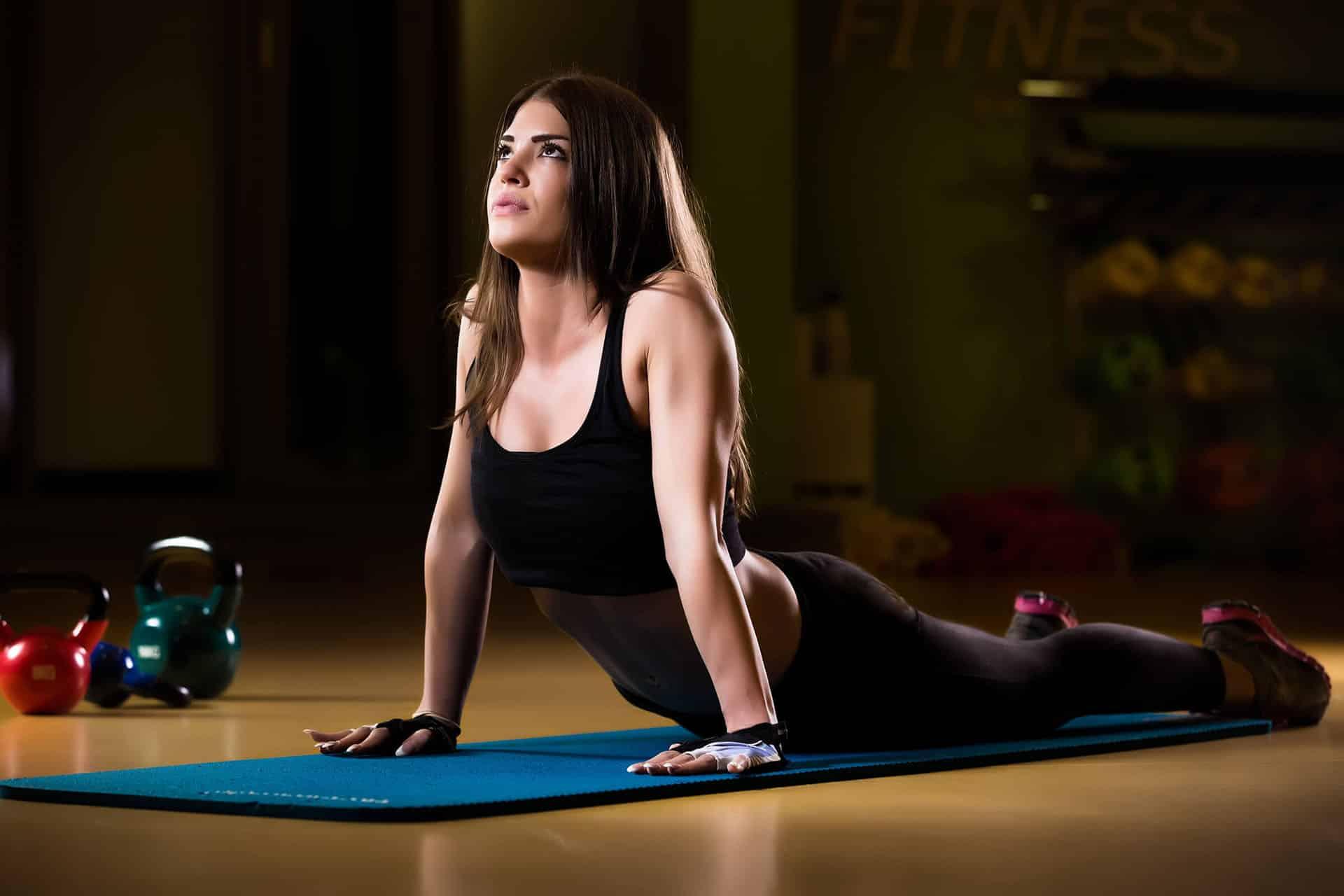Back pain is a common issue that affects millions of people worldwide. It can be caused by various factors, such as poor posture, muscle imbalances, sedentary lifestyles, or injuries. Incorporating gentle yoga stretches into your routine can help alleviate back pain and support a healthy spine. This article will explore the benefits of yoga for back pain and share some of the best poses to help you find relief and support.
Benefits of Yoga for Back Pain
- Improved Flexibility: Yoga helps increase flexibility in your muscles and joints, which can reduce stiffness and tension in your back. This improved flexibility can help alleviate pain and make it easier to perform daily activities.
- Strengthening of Core Muscles: Many yoga poses engage and strengthen your core muscles, which include your abdominal, back, and pelvic muscles. A strong core provides better support for your spine and can help prevent and reduce back pain.
- Better Posture: Poor posture is a common cause of back pain. Practicing yoga can help improve your posture by strengthening your muscles and promoting proper spinal alignment.
- Stress Relief: Stress and tension can contribute to back pain. Yoga helps you relax, reducing stress and tension in your body, which can alleviate pain and promote overall well-being.
- Improved Body Awareness: Yoga teaches you to pay attention to your body and to notice when you are holding tension or engaging in habits that may contribute to back pain. This increased body awareness can help you make adjustments to prevent and alleviate discomfort.
Top Yoga Poses for Back Pain Relief and Support
- Cat-Cow Pose (Marjaryasana-Bitilasana): This gentle movement helps to warm up your spine and relieve tension in your back muscles. Begin on your hands and knees, with your wrists directly under your shoulders and your knees under your hips. Inhale as you drop your belly and lift your chest and tailbone, gazing upwards (Cow Pose). Exhale as you round your spine, tucking your tailbone and bringing your chin towards your chest (Cat Pose). Repeat this movement for several breaths, following the rhythm of your breath.
- Child’s Pose (Balasana): Child’s Pose is a restorative pose that gently stretches your lower back and hips. Begin on your hands and knees, then sit back onto your heels, separating your knees as wide as your mat. Extend your arms forward and rest your forehead on the mat. Breathe deeply and allow your back to relax and lengthen. Hold the pose for up to a minute or as long as it feels comfortable.
- Sphinx Pose (Salamba Bhujangasana):This gentle backbend helps to strengthen your lower back muscles and promote proper spinal alignment. Lie on your stomach with your legs extended behind you and your forearms resting on the mat, elbows under your shoulders. Press your forearms into the mat as you lift your chest and gaze forward, keeping your hips and legs on the mat. Hold the pose for 5-10 breaths.
- Seated Forward Bend (Paschimottanasana): This pose stretches your lower back, hamstrings, and hips, which can help relieve tension and alleviate pain. Sit on the floor with your legs extended in front of you. Inhale and lengthen your spine, then exhale as you fold forward from your hips, reaching your hands towards your feet. Keep your spine long and avoid rounding your back. If you cannot reach your feet, use a yoga strap or towel to loop around your feet and hold onto the ends. Hold the pose for 5-10 breaths, then slowly sit back up.
- Supine Spinal Twist (Supta Matsyendrasana): This gentle twist helps to relieve tension in your lower back and hips. Lie on your back with your knees bent and feet on the floor. Bring your right knee towards your chest, and then gently guide it across your body with your left hand, allowing your right knee to rest on the floor or a cushion. Extend your right arm out to the side and turn your head to the right. Hold the pose for 5-10 breaths, then switch sides.
- Legs-Up-The-Wall Pose (Viparita Karani): This restorative pose helps to reduce tension in your lower back by allowing your spine to decompress. Sit close to a wall and swing your legs up the wall as you lie down on your back. Adjust your hips as needed to find a comfortable position, and let your arms rest by your sides. Stay in the pose for 5-10 minutes, focusing on deep breathing and relaxation.
Incorporating Yoga Props for Support
When practicing yoga for back pain relief, it’s essential to listen to your body and modify poses as needed. Yoga props such as blocks, straps, and bolsters can provide support and help you find the most comfortable and beneficial position for each pose. For example, you can use a block or bolster under your hips in Child’s Pose or under your knees in Supine Spinal Twist to provide additional support and alleviate discomfort.
Final Thoughts
Yoga can be an effective tool for managing back pain and promoting spinal health. By incorporating gentle stretches and poses into your routine, you can help alleviate pain, improve flexibility, and support proper posture. Remember to listen to your body, modify poses as needed, and consult with a healthcare professional if you have any concerns or existing injuries. With practice and patience, yoga can provide lasting relief and support for your mind, body, and spirit.



